Voice Commerce is on the rise. With more people using voice assistants than ever before, it’s time to explore how you can increase your ecommerce sales with Alexa in 2024.
If you ever wondered:
- Why Alexa transforms the ecommerce landscape.
- How you can increase your sales using Alexa.
- How to optimise your Amazon listings for Voice Commerce.
Then you’ve come to the right place.
This guide will cover:
- What Voice Commerce is
- Why Voice Assistants are on the rise
- Why Alexa dominates Voice Commerce
- How customers shop with Alexa
- Advantages and limitations of Voice Assistants
- How to optimise for Voice Commerce on Amazon
Definition: What Is Voice Commerce?
Voice Commerce describes the utilisation of voice recognition technology that enables consumers to purchase online merchandise or services.
In other words: It lets consumers buy products or services by simply using their voice.
But it doesn’t end there.
Voice Commerce can also be part of a much wider customer journey.
For example:
A consumer might have seen an ad for a product and asks Alexa about its price. The user then decides to buy it a few days later on the Amazon website.
That’s why Voice Commerce involves much more than an isolated transaction process via voice.
Often, customers simply want to get a piece of information in the most accessible way.
But the purchase doesn’t always happen via voice.
In fact, it’s often part of a wider customer journey.
That’s why in the upcoming chapters, I’ll show you exactly how to use voice assistants as a powerful tool to increase your sales on Amazon.
And with the definition of Voice Commerce out of the way, let’s take a look at the numbers.
Customer Engagement with Voice Assistants Increases
With voice assistants on the rise, the question is:
Is voice really that important in ecommerce?
The short answer is yes.
Especially for businesses.
Let me show you some recent statistics to highlight how big of a deal voice will become in 2024:
The number of digital voice assistants in use worldwide is estimated to reach 8.4 billion by 2024 (Statista).

Voice Commerce sales will amount to $164B worldwide by 2025 (Voicebot).
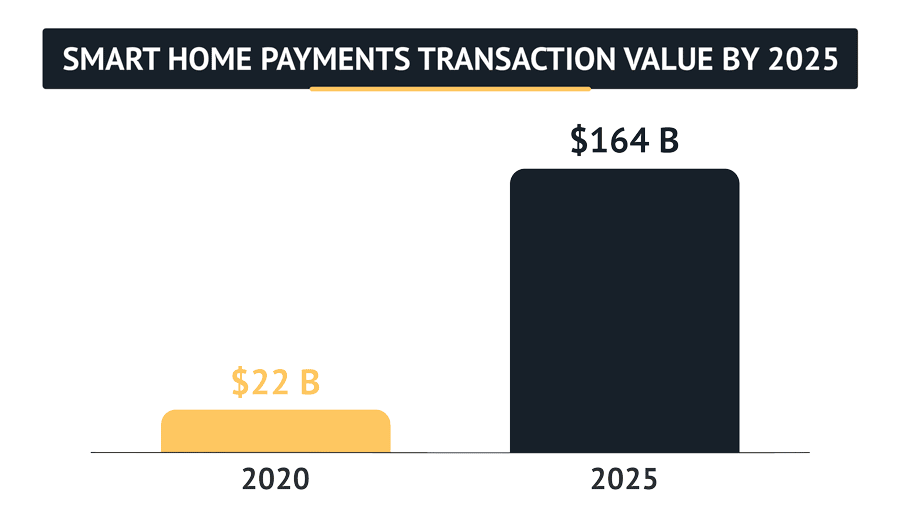
The following percentage of voice assistant owners already perform the following activities via voice on a regular basis:
- 51% of users research products,
- 36% of users add items to their shopping list,
- 30% of users track a package,
- 22% of users make a purchase,
- 20% of users provide ratings or reviews,
- 18% of users contact support, and
- 17% of users reorder items (Voicebot).

More than 100 million devices that run Alexa have been sold to date (Amazon).

More than 53% of voice commands are directed towards Alexa devices (Voicebot). While this is down 17% vs 2019, Alexa is still the dominant voice assistant worldwide.

And 27% of the global online population is using voice search on mobile (Google).

Why Alexa Is the Dominant Player in the Voice Commerce Industry
These figures just give us a glimpse of the unleashed sales potential of voice so far.
What hit me the most?
There are many voice assistants out there.
The Google Assistant, Siri, Cortana, Bixby, … you name them.
But Alexa is still the only one allowing customers to directly buy products using their voice.
And with more than 100 million Alexa devices out there, sellers can reach a large customer base.
What does that mean for us business owners?
If you want to increase your sales using voice in 2024, focus exclusively on Alexa.
Because the advanced infrastructure of the Amazon marketplace together with the unrivalled retail voice assistant is one hell of a combination.
How Can Customers Shop with Alexa?
Before I explain how you should optimise your Amazon content for Alexa, let’s take a look at the ways customers can shop with their voice today.
There are two options available:
In-Skill Purchases
In-skill purchases are relevant if you have developed your own Alexa skill and want to sell content or services within the skill itself. This is similar to in-app purchases on a smartphone.

British supermarket chain Ocado has led this by example. It launched an Alexa skill that lets users add groceries to their shopping list.
If you’re interested in building a customised Alexa skill, I highly recommend checking out this article on medium.com. It’s packed with hands-on advice on how to develop a skill from start to finish.
Let’s take a closer look at the second option:
Prime-eligible product purchases
Amazon has put a lot of time and effort into creating a seamless customer experience with its Echo devices.
For that to work, Amazon requires its customers to set up:
- An Amazon account
- An Amazon Prime membership
- A valid payment method
- A valid shipping address
- A device with access to Alexa
Once the customer has set this up, they can make use of Alexa commands like:
“I want to buy toilet paper.”
“What’s the best noise-cancelling headphone?”
“Add hand soap to my cart.”
etc.
Customers can purchase products, track parcels and also manage their orders directly with Alexa.
Amazon doesn’t even require its users to open an app or its website to confirm the purchase.
The voice command is enough.
It’s as simple as that.
Advantages and Limitations of Sales via Voice Assistants
Voice Commerce opens up a whole new world of advantages and challenges for sellers and vendors on Amazon.
This begs the question:
Should you care about optimising your Amazon product pages for Alexa?
Well, it depends.
You’re likely to get the benefit if you’re competing in a tech-savvy customer niche.
But if you’re selling upmarket Swiss watches, you might want to put your marketing resources elsewhere.
There’s really no one-size-fits-all answer to this.
But here’s a run-down of the most important things to consider when deciding on whether or not you should invest resources into Voice Commerce:
1. Voice Commerce Expands Your Target Group
One of the best ways to reach new customers is to tap into new sales channels.
With Alexa, voice-enabled purchases are going to be the next big thing in the ecommerce industry.
Why?
Firstly, because customers increasingly engage with brands via Echo devices.
They search for information about your product without even seeing it.
Secondly, because younger generations have already accepted Alexa as part of their home.
A recent study found that Millennials are at the forefront of owning voice-enabled devices:

And while younger generations are adopting the use of smart speakers right now, think about whom they might gift one this Christmas.
Right!
Their parents and grandparents.
Pro Insight: In 2020, more than 12% of voice assistant users were over 65 (Source: eMarketer). They value the convenience of voice-activated product search and have one of the highest spending power of all age groups.
Who would have thought?!
Key takeaways: Look beyond the surface of who your customers are. If your products are for Generation X or Millenials, Voice Commerce is a trend that you should not miss in 2024. If you cater products to older generations, voice might still be an opportunity for growing your business.
2. Voice Purchases Are Still Relatively Rare
In our modern world, everything seems to be very fast-paced.
But most consumers are still in the early adoption phase when it comes to voice-enabled devices.
And even more so when it comes to making voice transactions.
However, this also poses a huge opportunity for businesses that understand the early stage of the upcoming voice trend and optimise their offers for it.
On the flip side, the risk derives from a lower return on investment compared to traditional sales channels (for now).
So whether or not you should jump onto the Voice Commerce bandwagon depends also on the financial state of your business.
Key takeaways: Evaluate, whether you can afford to invest resources into a trend that will only fully unfold in a couple of year’s time. The first-mover advantage can be financially rewarding. But should be balanced against the risk of a delayed ROI.
3. Language Can Be a Barrier
As we all know, Alexa isn’t flawless.
As soon as a query becomes slightly more complex, the voice assistant arrives at its limits – pretty fast.
While we can expect these instances to become less of an issue with future software updates, customers still have to rephrase voice commands to get the desired Alexa response in the meantime.
The good news is that if your products target English-speaking consumers, you’re having an advantage over your foreign competition.
Why?
Because Amazon puts a lot of effort into the development of Natural Language Processing (NLP) and prioritises the English language due to its global prevalence.
What does that mean for YOU?
You should start optimising your products on Amazon right now, aiming for the first-mover advantage.
But if you’re running your business outside the US or UK, you might still have to wait for a couple of years until you can fully utilise the advantages of Voice Commerce.
Key takeaways: While the development of Alexa’s language processing algorithms is outside of your control, you should focus on optimising your products on Amazon for fitting search queries. This will help interested customers to discover your products and get your listings futureproof.
4. Competition Increases in the Voice Commerce Space
Chances are that you’re reading this article because you’ve searched for the term Voice Commerce on Google (or Alexa, who knows?).
But so might your competition.
Unlike traditional search, voice-enabled product searches will provide users only with a few results.
There’s simply no way to efficiently present users with more than a couple of search results via voice.
That’s why the fight over the top result per product category on Alexa will become VERY soon VERY competitive.
Vendors and sellers will have to spend a lot of money to optimise their products for voice-related search queries on the Amazon marketplace.
So if you can, start right now.
Key takeaways: Start optimising your Amazon product listings for voice-related search queries right now. The earlier you start, the easier it will be to achieve good rankings. Voice optimisation is expected to become a mainstream practice very soon.
How to Optimise for Voice Commerce on Amazon
It’s time to answer the question of how you can optimise your Amazon content for voice in 2024.
We’ve already learned that Alexa can present only a handful of results to voice queries.
Therefore, it needs to deliver the most relevant results – instantly.
That’s why I want you to think about your customers.
Who are they?
What are they searching for?
And more importantly:
How are they searching for your products?
You see, user intent is one of the most hyped buzzwords in the SEO industry in 2024.
And that’s for a good reason.
Let me explain:
If you know the intent behind the voice search of your customers, you can create content that caters to this need.
As a result, Alexa will reward those listings, because it knows they contain the relevant information users search for.
As an Amazon seller, you can cater to two types of user intent:
- Informational (Know) – the user wants to learn about a product.
- Transactional (Do) – the user wants to buy a product.
Informational Intent (Know)
Serving queries around informational intent can be quite tricky for Voice assistants.
Why?
Because these voice queries ask for a specific piece of information.
As a result, Alexa needs to understand the wider context of your Amazon listings. Not only the product’s categorisation or title.
There’s another challenge:
Customers can’t see your glossy product images in Alexa’s verbal response.
That’s why Amazon utilises other content elements to help Alexa’s algorithms understand the context and quality of a listing.
Remember the launch of A+ Content for Amazon sellers? Back in the day that was seen as a big deal.
But it makes sense.
Because it allows Alexa to use this additional content to produce relevant voice responses.
Transactional Intent (Do)
Contrarily to the informational intent, the transactional intent serves a customer who’s ready to buy your product.
To do this, Amazon requires its sellers to provide some initial listing inputs.
Primarily:
- A descriptive product title,
- Descriptive bullet points,
- A competitive price point,
- The correct product categorisation.
But how can you take it a step further?
How do you optimise products for Voice Commerce in 2024?
Let’s take a look at the inputs you have direct and indirect control over:
1. Aim for the Amazon Choice Badge
Amazon doesn’t reveal the exact formula on how to get the ‘Amazon’s Choice‘ badge. However, it’s important to understand its impact on the selection of products when it comes to answers to voice commands.

The badge is so attractive because listings with it usually rank higher in search results.
So having the badge will help your products get selected by Alexa to respond to search queries.
How to become ‘Amazon’s Choice’: You need to focus on availability, steady sell-through, good customer reviews and attractive price points.
Also: Make sure your product sits within the right category.
You don’t want your headphones to rank in the “large appliances” category.
2. Make Your Products Available to Prime Members
Amazon shoppers love the fast delivery of online purchases.
As Alexa owners are likely to already have a Prime subscription, they are also likely to expect the same fast shipping standards from their voice purchases.
To become a relevant offer to voice transactions, you need to keep up with this benchmark.
If you’re not yet on Amazon’s FBA program, make sure you sign up for it.
Once your products are stored in an FBA warehouse, the listings will earn the famous Prime badge.

Decreasing your time to ship a product will also help you to get better customer reviews.
… increasing the likelihood to get the Amazon’s Choice badge.
… subsequently resulting in more sales via Alexa.
Because in the end, you want to avoid a decline in conversions because of your products being not available.
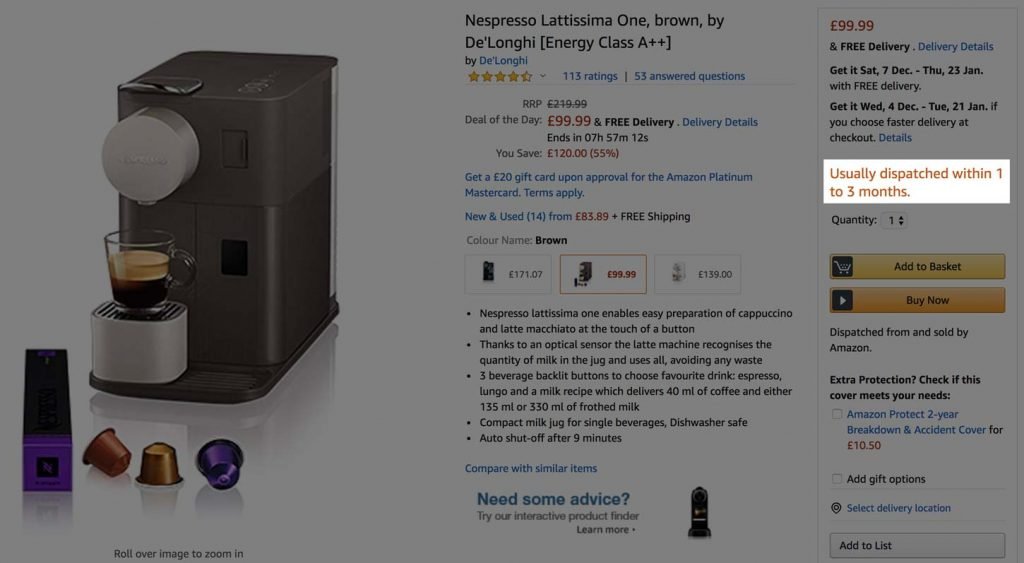
3. Focus on Availability and the Buy Box
It’s no secret.
Amazon hates it when products are out of stock.
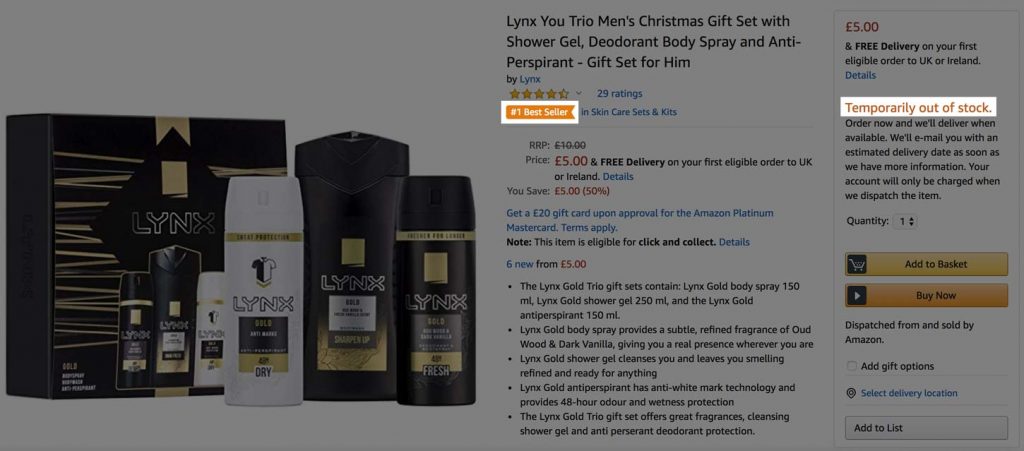
It only makes sense for the Alexa assistant to exclude unavailable listings from its search results.
And once excluded, it’s hard to get back in.
Hence, you should focus on keeping enough stock at hand and to restock in time.
Being consistently available will also help you to build loyalty sales with your customers.
Speaking of loyalty:
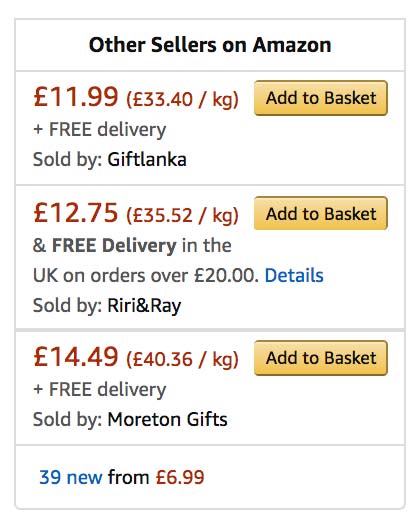
The fight over the Buy Box increases by the day.
If more than one seller offers the same product, Amazon is more likely to give the Buy Box to FBA sellers with a competitive offer.
This has also implications for voice purchases.
If customers order via Alexa, they will receive the product from the winner of the buy box.
💡BONUS TIP
Keep an eye on your listings and ensure you win the buy box. (And question your pricing if you don’t over a longer period of time.) Otherwise, your competition will seal the deal with customer requests via voice.
4. Encourage Customer Reviews
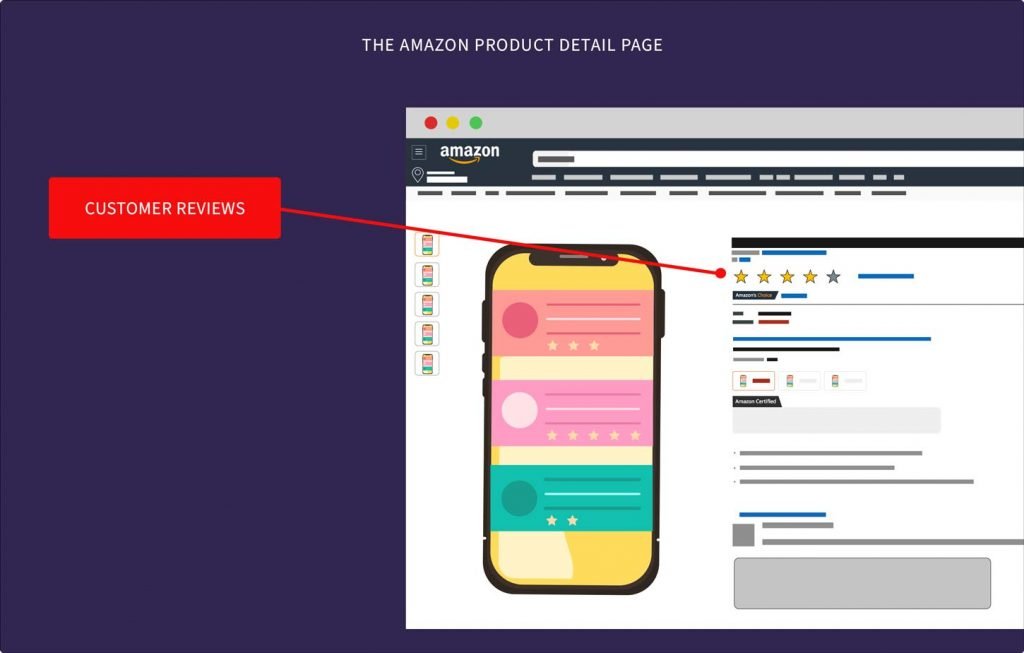
When optimising for Alexa search, make sure you manage your product reviews.
In fact, you should encourage your customers to rate your listing.
Products with good customer reviews are likely to rank higher in Alexa’s search results.
Because they reflect a higher level of trust and satisfaction of previous customers.
![]() PRO TIP
PRO TIP
Don’t forget that Amazon users might also rank your customer service in case of issues with their orders.

5. Optimise Your Product Detail Pages (incl. A+ Content)
I saved the most obvious for the end.
Because optimising your title, keywords and content should not be driven by the goal of ranking in Alexa’s voice results.
It should be done to rank on Amazon itself.
However, following Amazon’s Style Guide and optimising your listings as part of Amazon SEO activities will also have a positive effect on your Alexa rankings.
Let’s take a closer look.
Optimise the Title
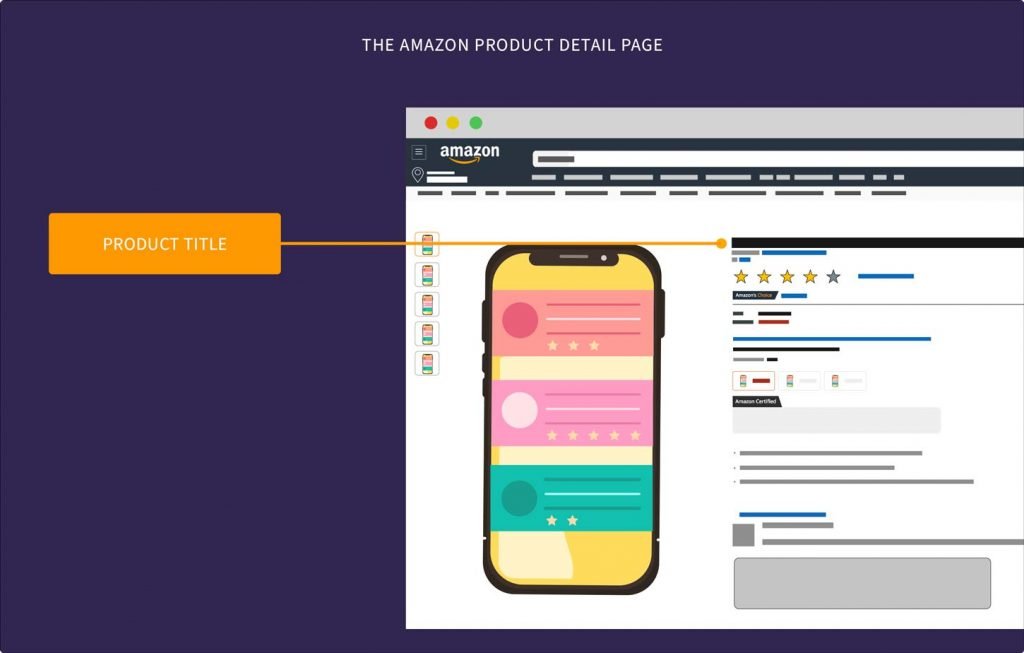
The title is the most important part of a product on any ecommerce platform.
Customers see it first when they land on a detail page and use it to gauge whether the product offers the features they’re looking for.
In a world of voice, it’s no different.
Alexa makes use of the information in the title and even reads it out loud to users.

The best part?
Amazon itself hands out the secret sauce for the perfect title structure per product category.
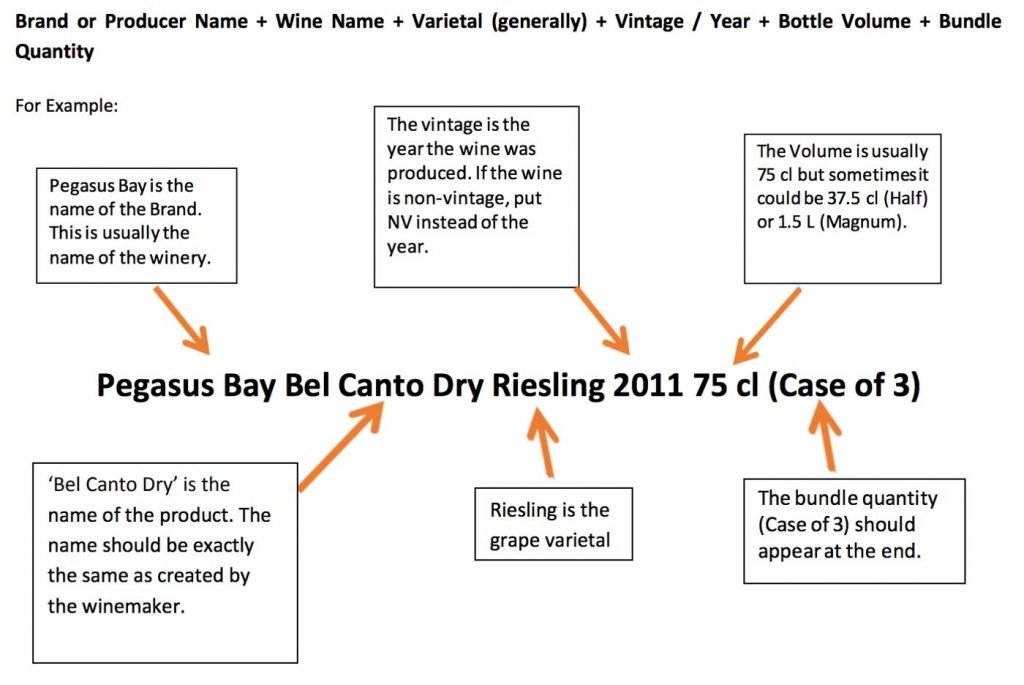
For example:
If you’re selling wine on Amazon, the ideal product title looks like this:
Brand or Producer Name + Wine Name + Region + Vintage / Year + Bottle Volume + (Bundle Quantity)
Pretty neat, huh?
Following this structure will help your listing to comply with the standards Alexa is looking for.
And increases your chances of being considered as relevant voice result.
Description and Bullet Points
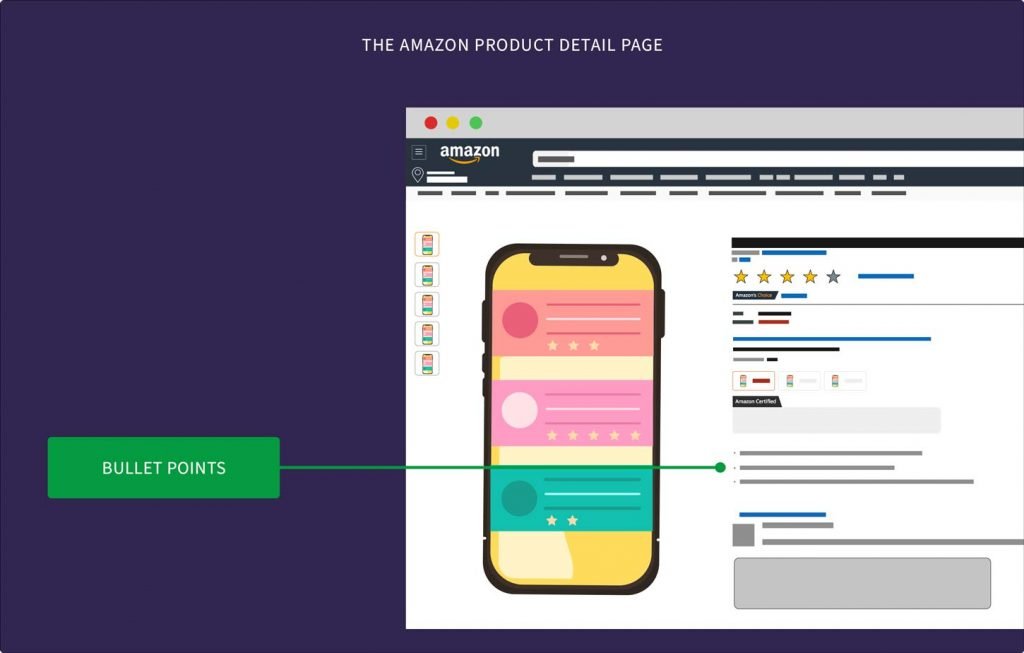
The product description and bullet points are important copy to inform customers about your offer.
While there is no evidence that they are being used to determine your ranking position on Amazon, it will indirectly help Alexa understand what your product is about.
How do you optimise for it?
Simply highlight the biggest sales argument in your bullet points. Describe your product’s function and use in your product description.
The more natural the copy reads, the better.
Here’s a good example of informative bullet points:
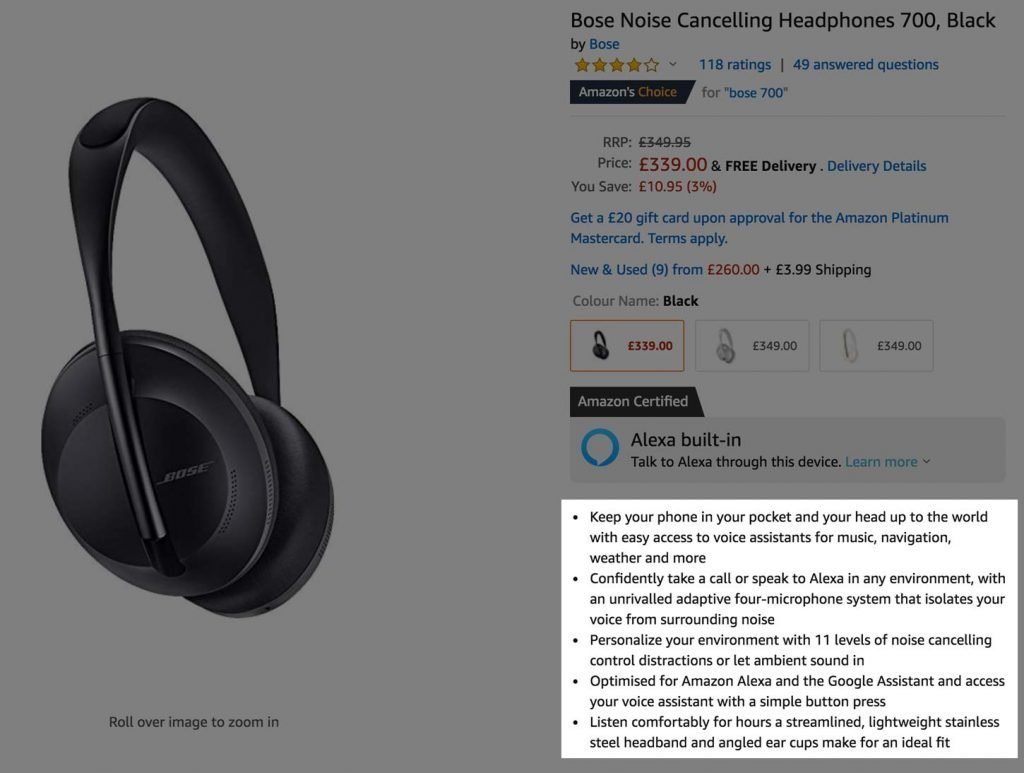
Exhaust Keywords
Yes, you read that right.
Keywords are pretty important for Voice Commerce Optimisation (VCO) on Amazon in 2024.
While you can only select up to five keywords, the character limit is less restrictive.
So instead of using just five keywords, you should enter a combination of descriptive words per keyword field.
Alexa will likely use those words to categorise your products and list them when a voice query contains a matching keyword.
Utilise Structured Data
Lastly, you should make use of all filters that apply to your product.
If you sell clothes:
Define the colour, size, fit, etc.
If you sell Groceries:
Define the speciality, e.g., Halal, Kosher, No Added Sugar, Organic, Vegan, Vegetarian, etc.
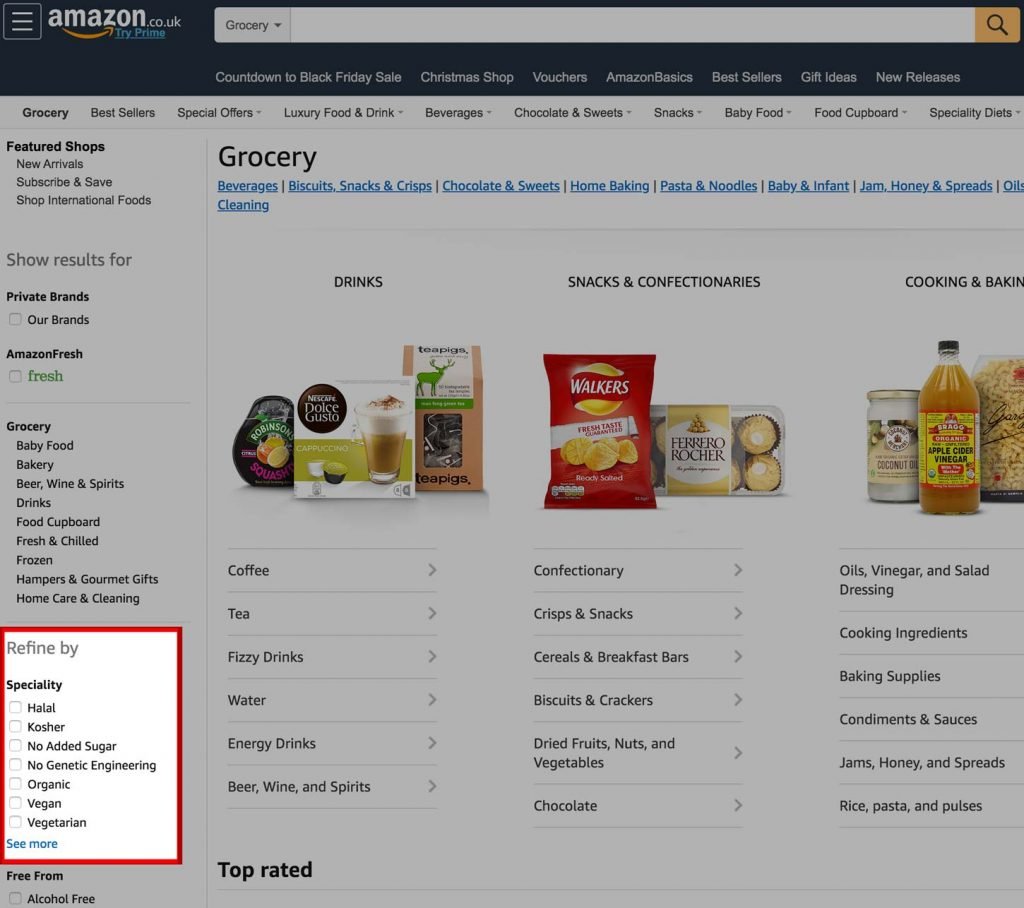
Voice assistants like Alexa will use these structured data and consider your product as relevant if it’s assigned to a subcategory.
It helps them to better answer user queries like:
“Alexa, what’s the best product for Vegans on Amazon?”
BONUS Tip: Respond to FAQs
There’s one more section you should draw attention to if you optimise your Amazon listing for Alexa:
The FAQ section.
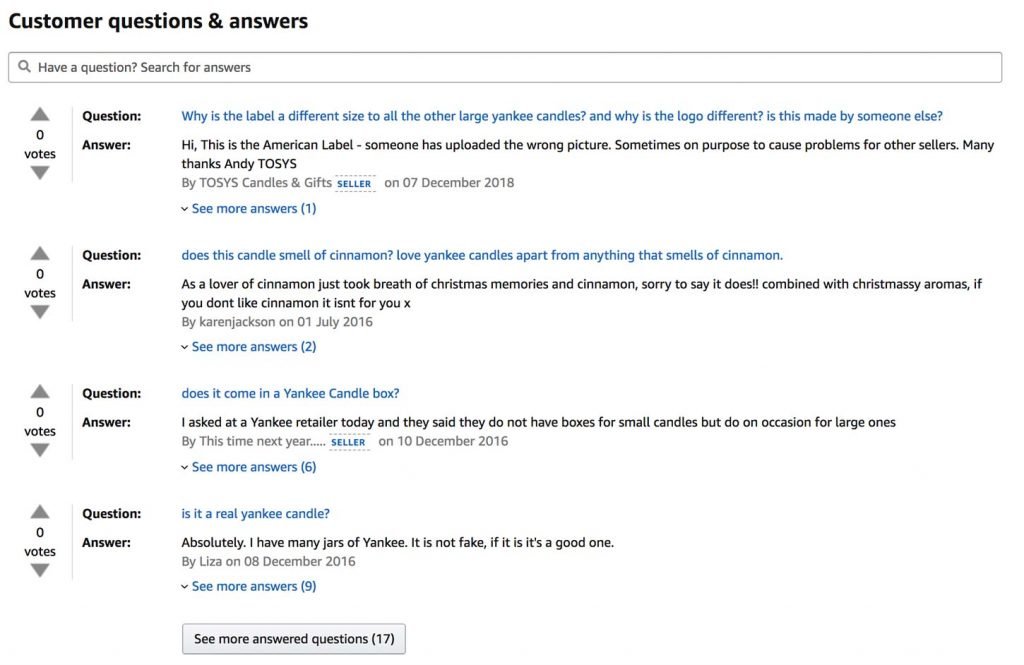
It gives you direct insights into the needs and wants of your (potential) customers.
Make sure to answer those frequently asked questions, as Alexa is likely to use this response to serve voice queries about your product.
Conclusion – Utilising Voice Commerce is the Number 1 Insider Tip for Amazon Sellers in 2024
So there you have it.
Voice Commerce is THE most overlooked innovation happening right now in the ecommerce landscape.
My prediction is that it will fundamentally change how customers shop and inform themselves about products and brands out there.
And as we learned in this post, it has already started to transform customer behaviour!
Optimising your Amazon listings now will be the key to getting Alexa to show your product as the number one result for relevant voice queries in 2024.
Still have questions? Ping me on Twitter.
—
Enjoyed this article? Here are more things you might like:
How to Increase Your Ecommerce Sales (Fast) – A curated list of strategies to grow your business on Amazon & Co.
Ecommerce Glossary – Stop the guessing. My glossary explains every ecommerce term in under 30 seconds.
Ecommerce Myths That Kill Your Business – A list of common ecommerce myths you should stop believing right now.

